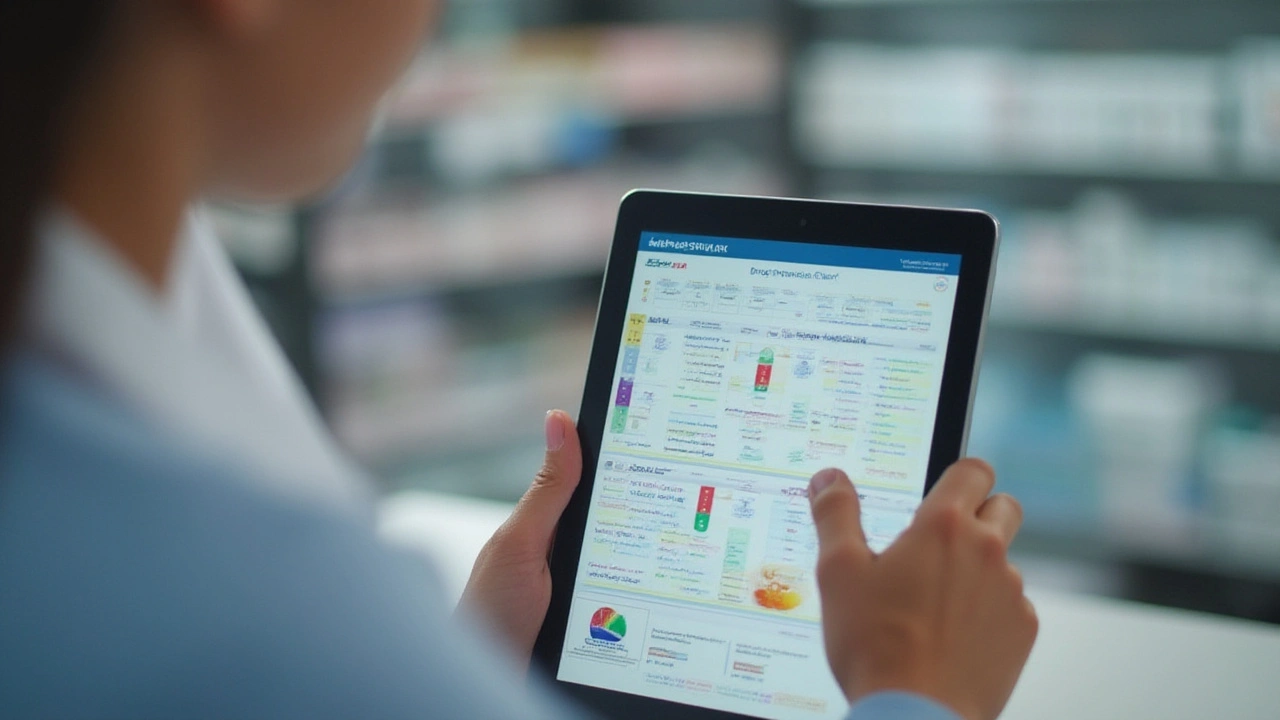Read Drug Interactions: The Simple Way to Stay Safe With Your Meds
Mixing medications seems harmless until you learn the hard way. Drug interactions can sneak up on anyone—causing side effects, making drugs weaker or stronger, or even leading to emergencies. Ever had a doctor ask, “What else are you taking?” That’s why. It’s not just about the active ingredients; even vitamins, herbs, and over-the-counter meds are in on the act.
So what does it actually mean to read drug interactions? It's not some cryptic hospital task. It means checking how your meds work together before you take them. Picture this: you pick up a prescription at the pharmacy but also use ibuprofen for headaches and St. John’s Wort for sleep. You want to know if that’s safe, right? Here’re some plain, hands-on steps for anyone wanting to skip side effects and nasty surprises.
First: grab your list of all medicines—everything, not just prescriptions. Don’t skip on the daily allergy pill or those “natural” supplements. Make a cheat sheet on your phone. Pharmacists love that, and it’ll save time if you ever end up in urgent care.
Next, use online interaction checkers. Reliable sites like Drugs.com have simple tools where you add your meds and instantly see red flags. These aren’t perfect, so don’t treat them as law, but they’ll catch the big no-nos. Did you know that some cholesterol medicines clash with grapefruit juice? That’s the level of weirdness these tools catch.
Don’t just trust the internet. Double-check with your pharmacist. They spot combos even when the interaction is just a stomachache or tiredness—things you might shrug off. Ask them: “Are these safe together? Anything I should avoid eating or drinking with them?” It costs nothing and usually takes sixty seconds. And if your doctor is adding a new medicine, always mention everything you’re already taking—don’t assume they remember.
Watch for warning signs. If you start a new combo and suddenly feel dizzy, get a rash, or anything seems odd, don’t power through. Call your doctor’s office or drop by the pharmacy. Most problems start off mild and can be fixed easily if you pay attention. It beats winding up in the ER, right?
After all, the whole point isn’t just to avoid the worst-case scenario. It's about feeling your best without mystery side effects. And once you get in the habit of reading drug interactions, you’re not just following “doctor’s orders”—you’re taking charge. Pretty smart move.
Bottom line: reading drug interactions isn’t chemistry class or medical school stuff. It’s about being a little nosy (in a good way!) about what you put in your body, and making sure your meds work for you—not against you. Save your cheat sheet, ask questions, and use tech to double-check. Your body will thank you.
How to Read a Drug Interaction Chart Effortlessly: Safe Medication Management Guide
Posted by Elias Hartfield on Jul, 29 2025

Learn how to read a drug interaction chart with confidence. Find out what those columns and colors mean, avoid risky combos, and handle medications safely.
